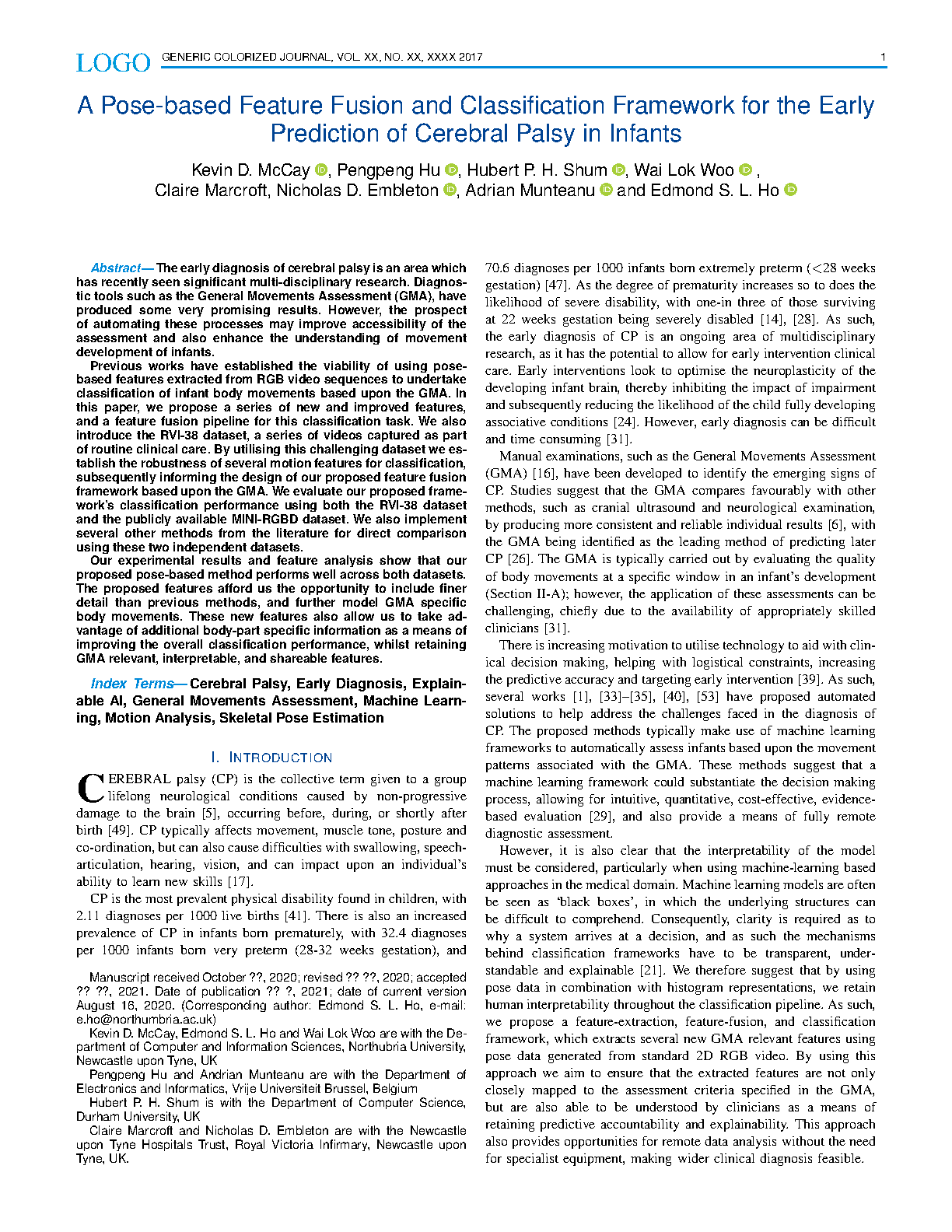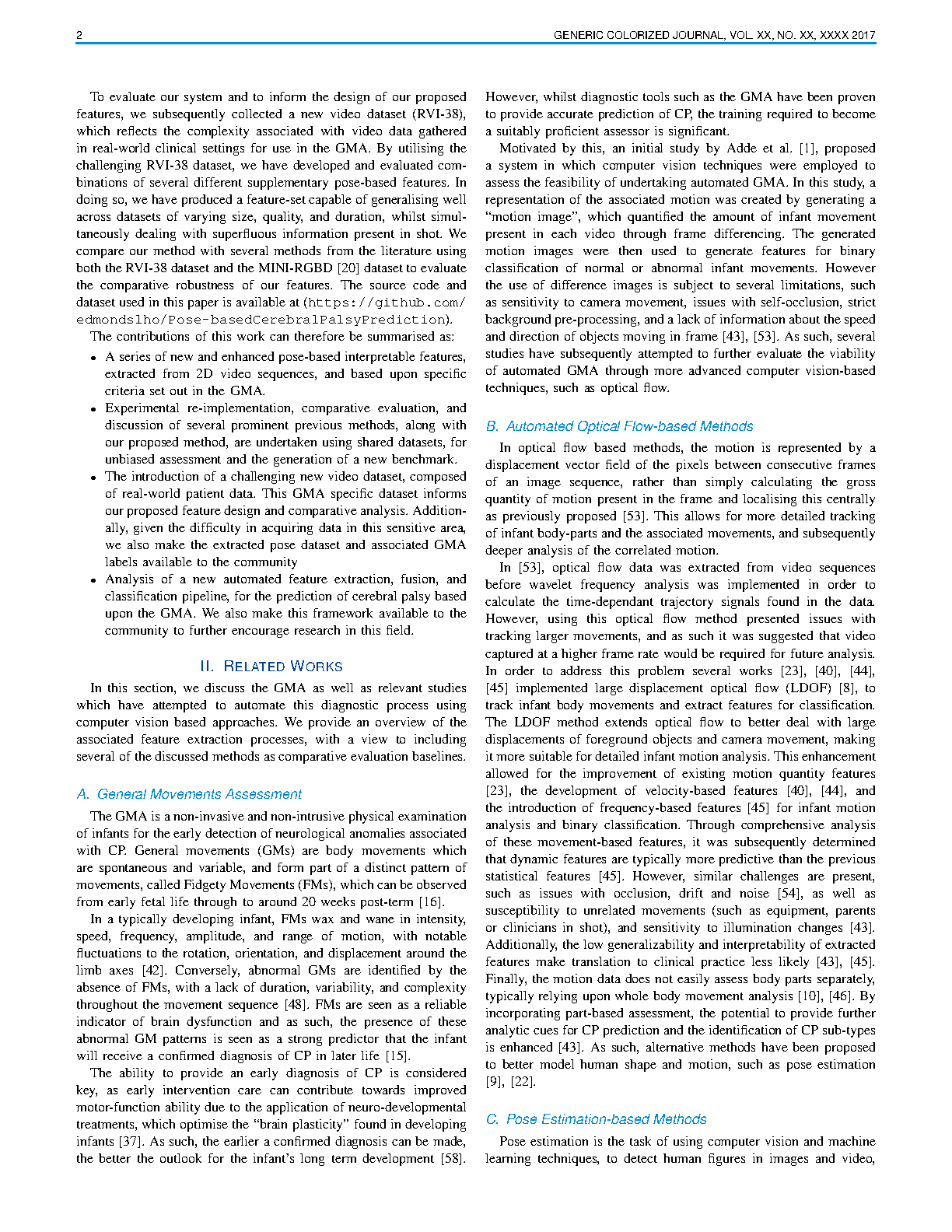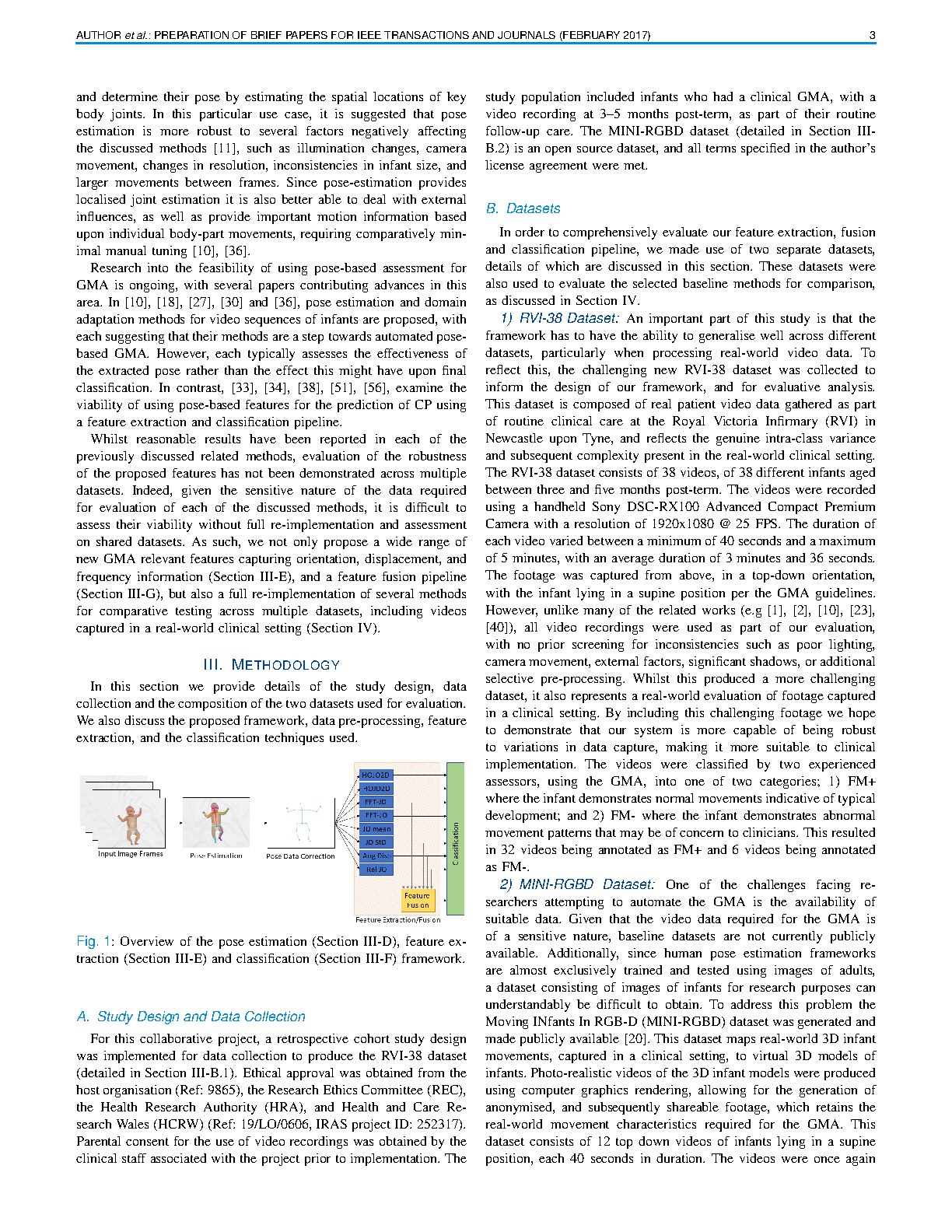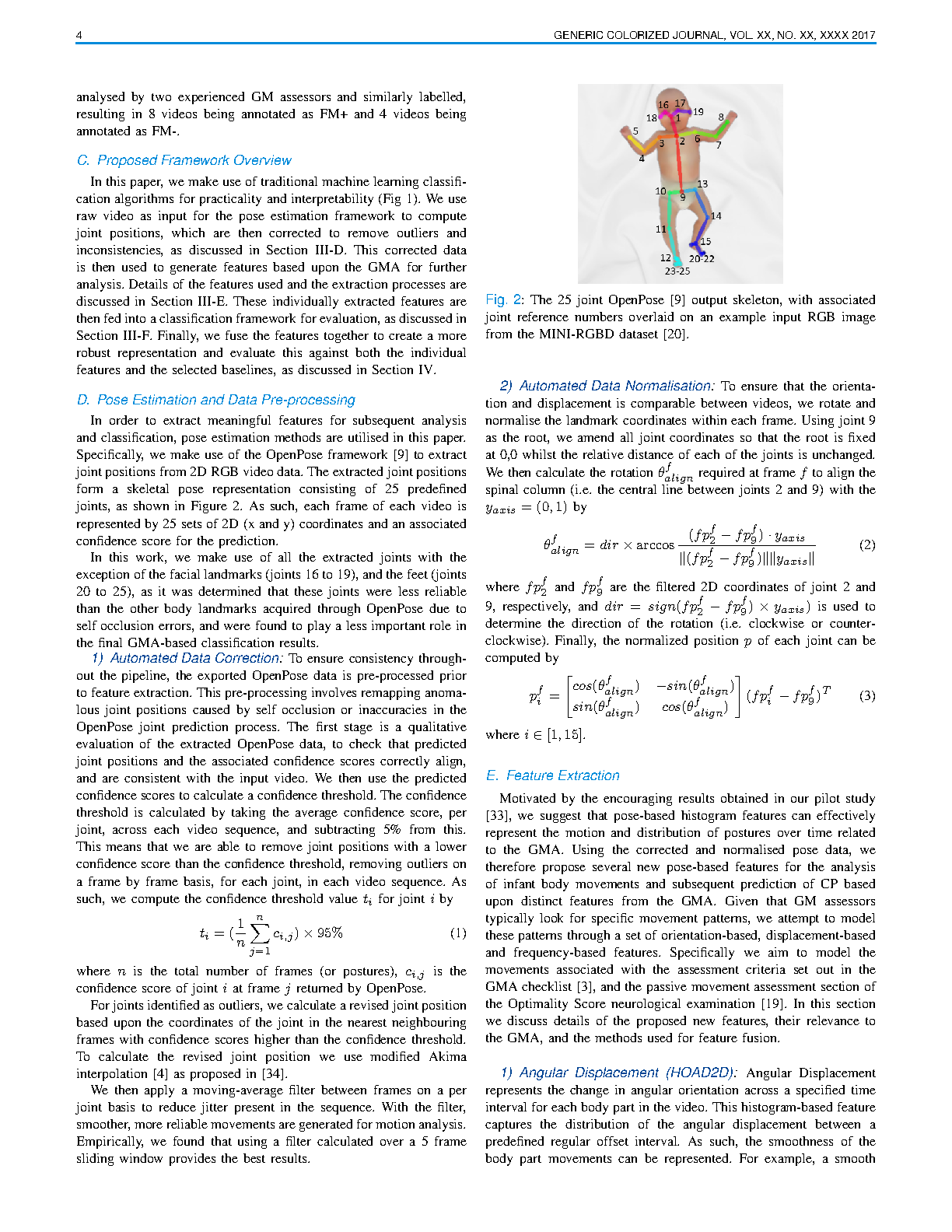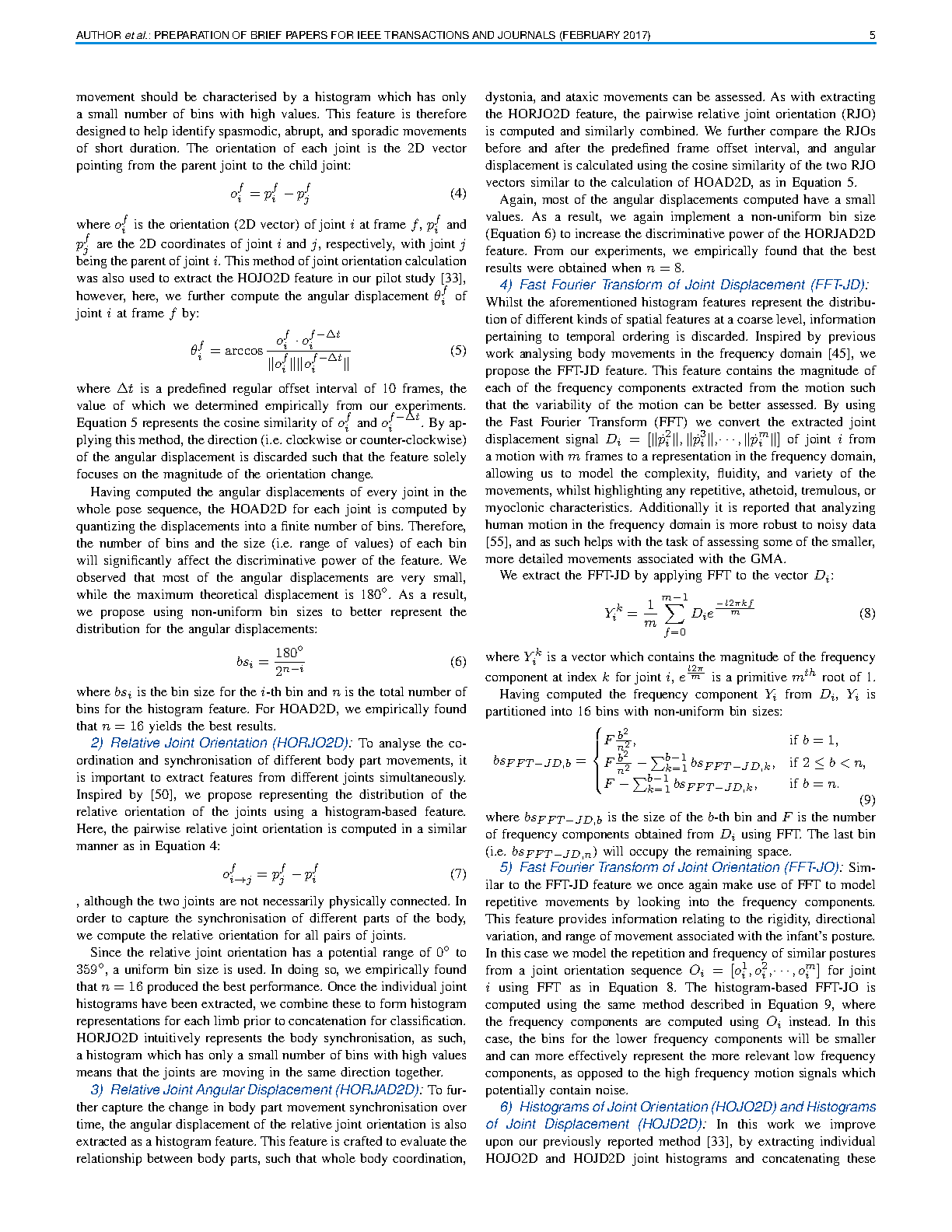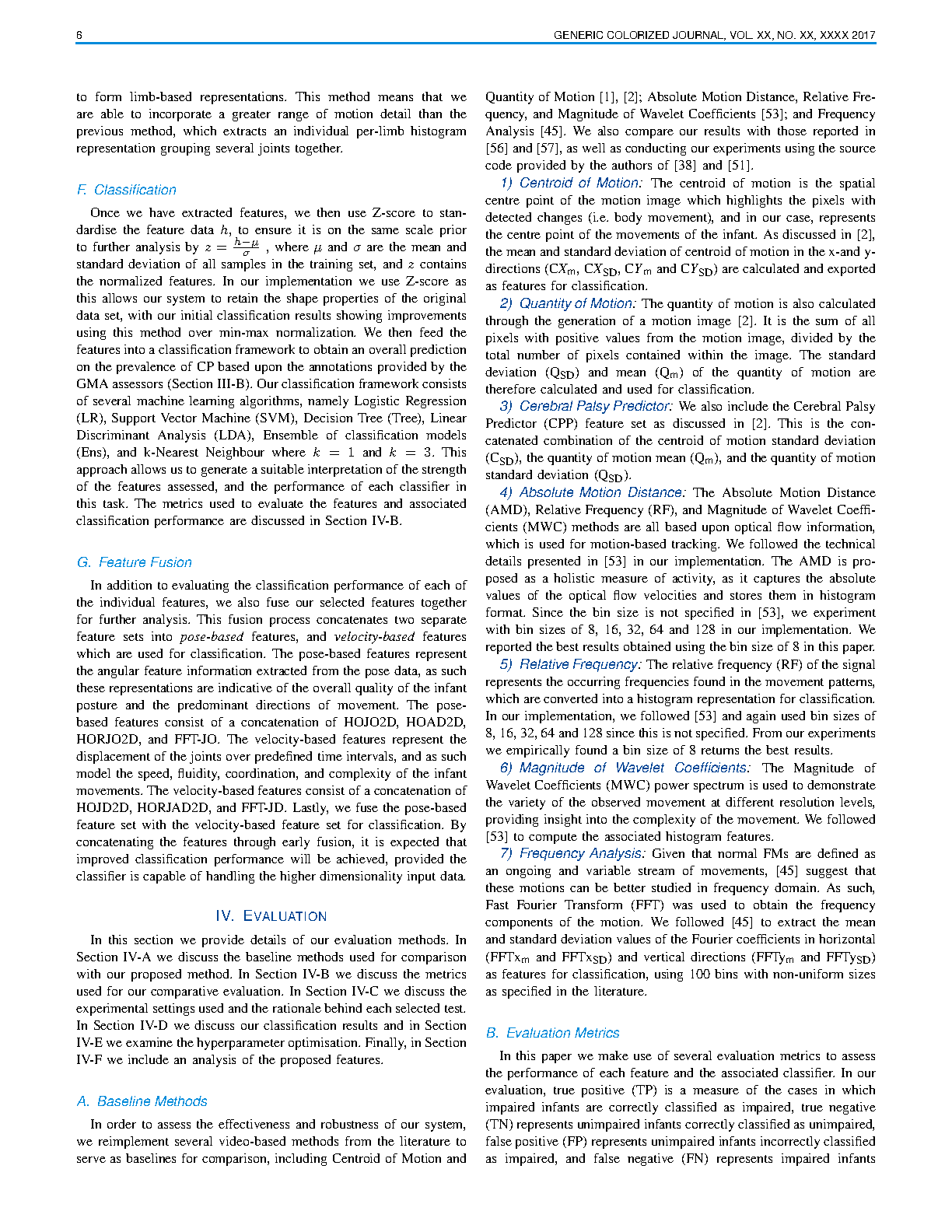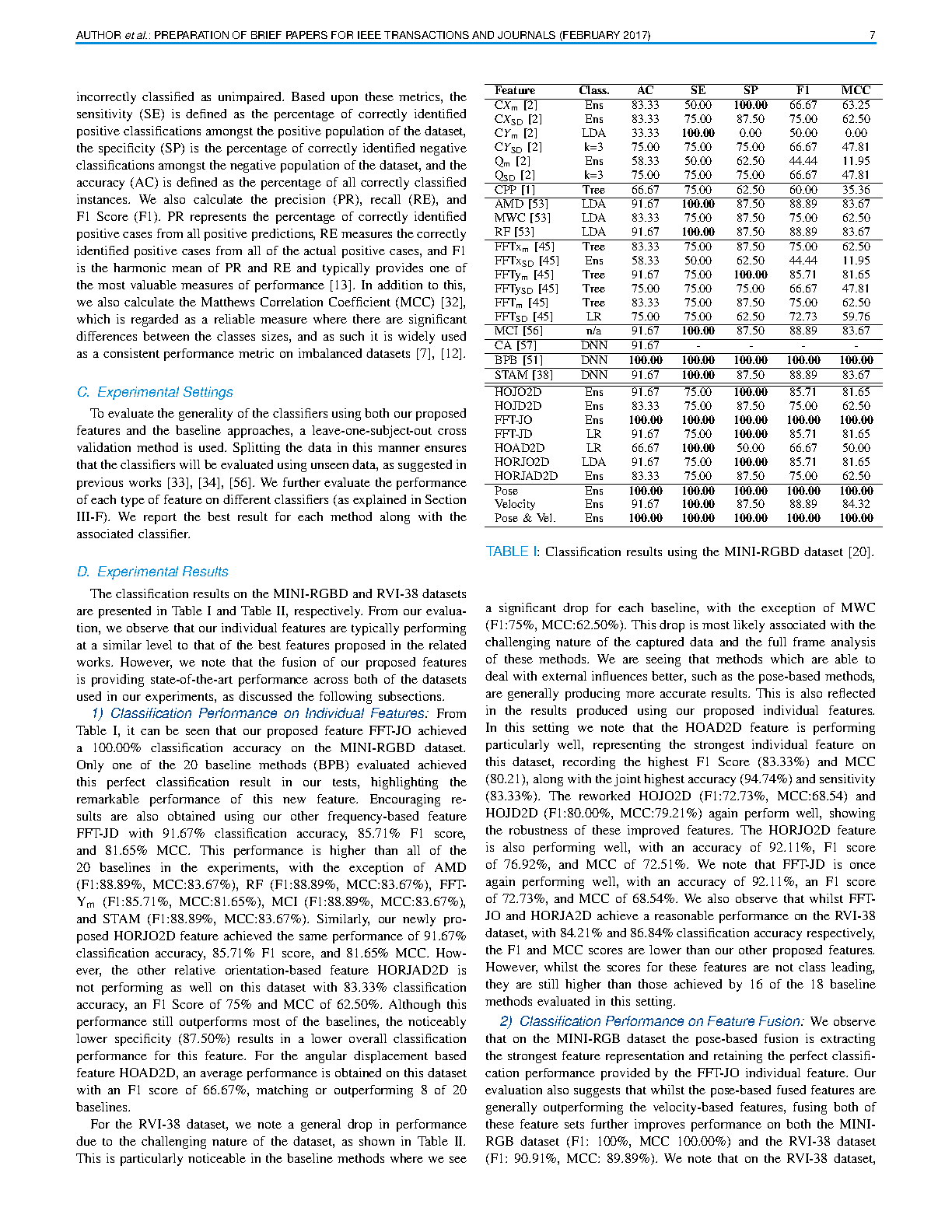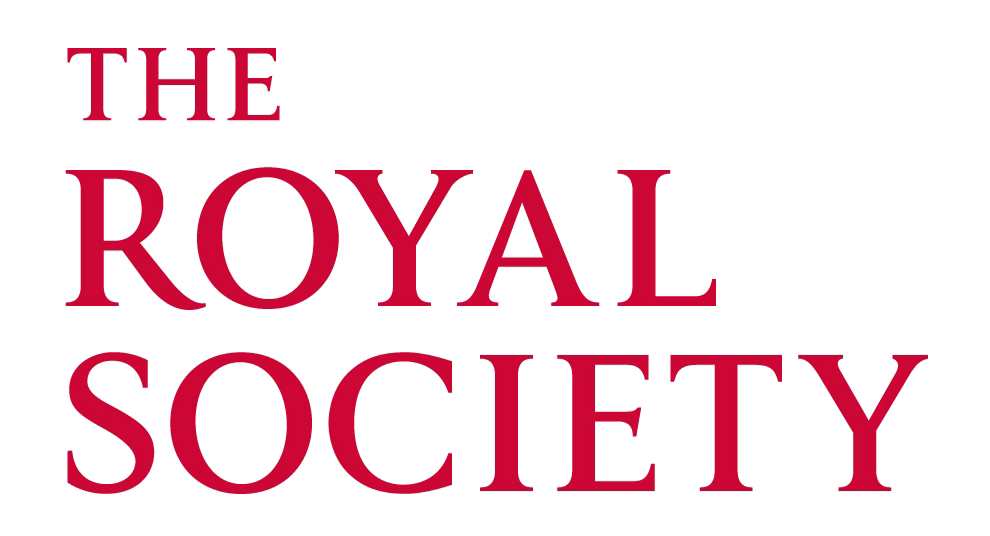A Pose-Based Feature Fusion and Classification Framework for the Early Prediction of Cerebral Palsy in Infants
Kevin D. McCay, Pengpeng Hu, Hubert P. H. Shum, Wai Lok Woo, Claire Marcroft, Nicholas D. Embleton, Adrian Munteanu and Edmond S. L. Ho
IEEE Transactions on Neural Systems and Rehabilitation Engineering (TNSRE), 2022
Impact Factor: 5.2† Top 25% Journal in Engineering, Biomedical† Citation: 49#

Abstract
The early diagnosis of cerebral palsy is an area which has recently seen significant multi-disciplinary research. Diagnostic tools such as the General Movements Assessment (GMA), have produced some very promising results. However, the prospect of automating these processes may improve accessibility of the assessment and also enhance the understanding of movement development of infants. Previous works have established the viability of using pose-based features extracted from RGB video sequences to undertake classification of infant body movements based upon the GMA. In this paper, we propose a series of new and improved features, and a feature fusion pipeline for this classification task. We also introduce the RVI-38 dataset, a series of videos captured as part of routine clinical care. By utilising this challenging dataset we establish the robustness of several motion features for classification, subsequently informing the design of our proposed feature fusion framework based upon the GMA. We evaluate our proposed framework’s classification performance using both the RVI-38 dataset and the publicly available MINI-RGBD dataset. We also implement several other methods from the literature for direct comparison using these two independent datasets. Our experimental results and feature analysis show that our proposed pose-based method performs well across both datasets. The proposed features afford us the opportunity to include finer detail than previous methods, and further model GMA specific body movements. These new features also allow us to take advantage of additional body-part specific information as a means of improving the overall classification performance, whilst retaining GMA relevant, interpretable, and shareable features.
Cite This Research
Supporting Grants
Royal Society International Exchanges (Ref: IES\R1\191147): £11,940, Co-Applicant (PI: Dr Edmond S. L. Ho)
Received from The Royal Society, UK, 2019-2021
Project Page
